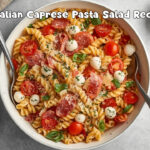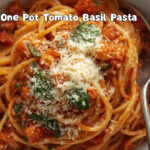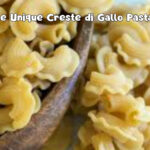Table of Contents
ToggleHigh-fiber pasta is healthier than regular flour-based traditional Italian pasta without compromising taste. It has 15% fiber from 98% durum wheat and 2% inulin, a prebiotic fiber. It has fewer calories and a low glycemic index (GI 23), which means high fiber in pasta won’t spike blood sugar. It also helps lower cholesterol and blood pressure and reduces the risk of heart disease. Moreover, fiber aids in digestion and keeps your bowels healthy.
In this article, you’ll learn the health benefits of high fiber in pasta and the nutritional content of different kinds of pasta, from white to whole wheat to gluten-free—and choosing between them can be valuable for determining how they fit your dietary needs. Let’s get started! Should we?
Why is fiber in pasta a necessary nutrient?
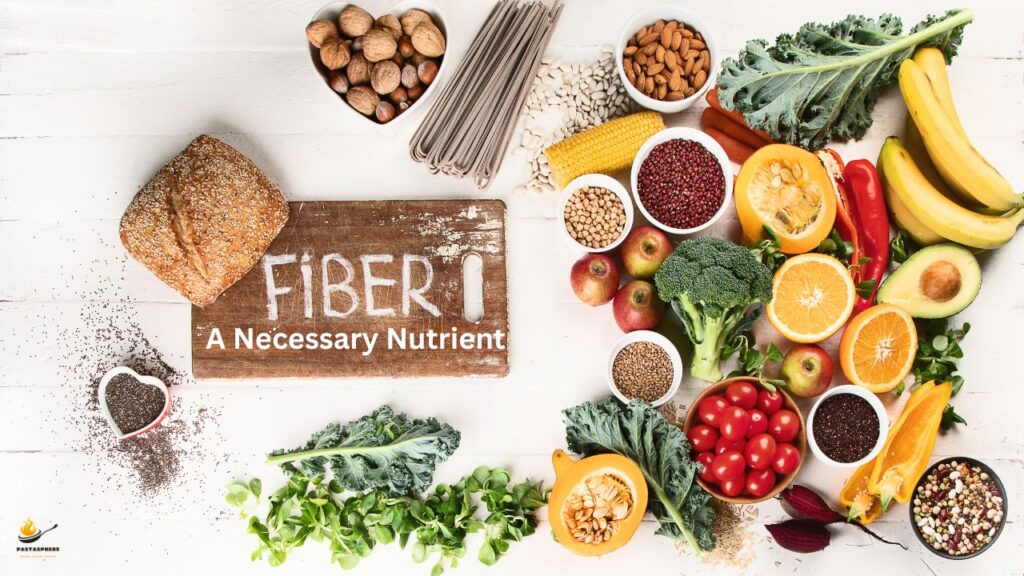
Fiber, found in fruits, vegetables, beans, and grains, feeds the microbiota in your gut. This microbiota helps move food through your digestive system and keeps your bowel movements regular. Moreover, these good gut bacteria produce valuable post-biotics that can help regulate immune function, fix leaky gut, and fight chronic inflammation.
Fiber is an essential nutrient that controls blood sugar and lowers cholesterol. Al-dente cooked pasta has a special fiber called resistant starch, which increases healthy gut bacteria and strengthens your digestive system. Studies show that taking enough fiber can lower the risk of heart disease, diabetes, and some colon cancers.
Nutritional Differences Between Wholegrain vs. Refined Pasta:
A study has not compared disease results between white and wholegrain pasta. However, wholegrain products are consistently associated with better health outcomes than refined grain products.
Wholegrain pasta has fewer calories but more fiber and nutrients like manganese, selenium, copper, and phosphorus. Fiber helps you feel full, and wholegrain pasta may reduce hunger and cravings better than refined pasta.
During refining, pasta is stripped of its minerals and vitamins, meaning fiber in pasta gone. Refined pasta has some nutrients but less fiber and fewer health benefits overall. Scientifically refined pasta is high in carbohydrates that can spike blood sugar fast, and your body has to work to break it down. Constant high blood sugar spikes can cause issues over time, whether you are diabetic or not.
Fiber is essential to the diet. Wholegrain consumption is generally associated with better health outcomes than refined grains, such as fewer heart disease, diabetes, and body fat.
Here’s a comparison of the nutrients found in one cup of cooked whole-wheat spaghetti versus one cup of cooked refined, and enriched spaghetti.
| Nutrient | Whole-Wheat Spaghetti (1 cup, cooked) | Refined & Enriched Spaghetti (1 cup, cooked) |
| Calories | 174 | 221 |
| Carbohydrates | 37 grams | 43 grams |
| Fiber | 6 grams | 2.5 grams |
| Protein | 7.5 grams | 8 grams |
| Fat | 0.8 grams | 1.3 grams |
| Iron | 1.5 mg (8% DV) | 2.0 mg (11% DV) |
| Magnesium | 76 mg (19% DV) | 24 mg (6% DV) |
| Selenium | 42 mcg (60% DV) | 37 mcg (53% DV) |
| Glycemic Index (GI) | ~40–50 | ~60–65 |
| B Vitamins (Thiamin, etc.) | Lower (naturally occurring) | Higher (added during enrichment) |
Nutritional Comparison Between Different Pasta Types
Knowing the nutritional content of different types of pasta helps you choose the one that fits your health goals. Next time you’re visiting shopping, keep the given below useful information in mind.
Vegetable Pasta
Vegetable pasta is made with wheat and various vegetable powders, such as carrots or sweet corn. Depending on the brand, a 2-ounce serving can give you about ¼ to ½ servings of real vegetables. On average, this serving contains 200 calories, 41g of carbs, 8g of protein, and 4g of fiber in pasta.
Chickpea Pasta
Chickpea pasta is gluten-free, a good alternative for people with gluten intolerance. Like white and whole wheat pasta, it has iron and also provides potassium and magnesium. Magnesium is the fourth most important mineral in the human body and supports proper body function. A 2-ounce single serving of chickpea pasta has about 190 calories, 35g of carbs, 11g of protein, and 8g of fiber.
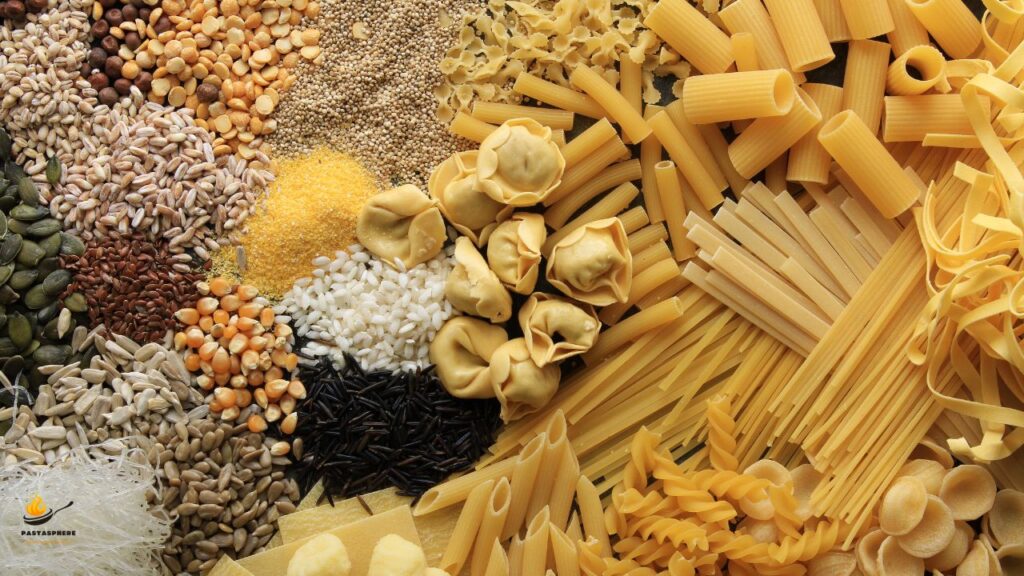
Red Lentil Pasta
The pasta is gluten-free and made from red lentil flour. It’s a good source of potassium, a necessary nutrient for the functioning of all cells. Red Lentil pasta has less iron than chickpea pasta. Each 2-ounce serving contains 13g of protein, 180 calories, 34g of carbs, and 6g of fiber.
Is Pasta Too High in Carbs?
Pasta contains high carbohydrates. One cup of cooked spaghetti has 37–43 grams of carbohydrates, depending on whether it’s wholegrain or refined.
Refined pasta has more simple carbohydrates and less fiber. The carbohydrates you consume are quickly absorbed in the blood, which can cause a sharp rise in blood sugar levels.
Wholegrain pasta, on the other hand, has more fiber, which helps slow digestion. This pasta helps maintain hunger and keeps blood sugar regular.
That’s why people with diabetes are advised to moderate their carbohydrate intake and choose fiber-rich foods to avoid blood sugar spikes. Eating wholegrain pasta in moderation is a better option than refined pasta.
Eating more refined carbohydrates is linked to health issues like:
- Diabetes –High-carb diets may raise the risk of boosting blood sugar levels and insulin resistance over time.
- Fatty Liver Disease – Excess carbs, especially sugar and refined grains, are reasons to build up fat in the liver.
- Heart Disease: A study found that a high intake of refined carbohydrates is directly associated with higher triglyceride levels, inflammation, and lower HDL (good) cholesterol.
- Weight Gain & Obesity—Refined carbs are digested quickly, leading to spikes in blood sugar and insulin. This increases hunger, leading to overeating and weight gain.
- Metabolic syndrome –Another study found that those who eat a high amount of carbs from starchy foods are likely to develop a group of risk conditions (like belly fat, high blood pressure, and high blood sugar) that raise the risk of heart disease and diabetes.
But it’s important to remember that these studies only show a possible association. They don’t prove that carbs directly can cause these problems. Factors like diet, activity level, and portion size also significantly affect health.
Is Wholegrain Pasta a Better Option?
A healthier option is high-fiber in pasta made with sprouted grains and multiple ingredients, like soybeans and lentils. Multigrain or wholegrain pasta has all the amino acids your body needs for better digestion and even complete protein. One serving of wholegrain pasta contains an impressive 9 grams of protein.
Which pasta type has more fiber?
Wholegrain pasta is also a healthier option; it has 5g+ more fiber per serving than traditional refined pasta. Pasta made with legumes like beans and chickpeas tends to have more protein and fiber. Wholegrain pasta with homemade sauce is a balanced diet.
The key is moderation. Wholegrain pasta has shown positive symptoms to improve health markers such as lowering LDL cholesterol, BP, and insulin resistance.
Health Benefits of High Fiber in Pasta
In comparison, high-fiber pasta is healthier than white flour-based regular pasta. Fiber in pasta has many health benefits, including helping lower cholesterol and maintain blood pressure, which helps to protect against heart disease. High-fiber pasta also helps with digestion and supports bowel health. Some research says dietary fiber prevents the risk of colorectal cancer, but the results are mixed and unclear.
Regular white pasta that doesn’t have many nutrients is commonly made with semolina flour. Therefore, your body quickly turns these carbohydrates into sugar, stored as fat. As a result, you may feel tired and heavy soon after you feel a quick burst of energy after eating it. On the other hand, complex carbs (like those in high-fiber pasta) are digested more slowly, giving your body steady energy and making you feel full for a longer time.
Tips for Healthier Pasta Meals
Consuming pasta in moderation is essential for a healthy diet and life. Wholegrain pasta is a better choice, as it has more fiber and nutrients and fewer calories and carbs.
However, it’s not just the pasta type that matters; what you add to top of it is equally important.
Adding creamy sauces and lots of cheese can add a lot of extra calories and fat. If you’re weight-conscious or want to lose weight, try topping your pasta with olive oil, fresh herbs, or your favorite vegetables instead.
You can also add your choice of protein, like chicken or fish, to make your pasta more filling and balanced. Vegetables like broccoli, bell peppers, or tomatoes can provide extra fiber and vitamins.
Here are some healthy pasta ideas:
- Whole-wheat spaghetti with salmon, lemon, and herbs
- Veggie pasta with olive oil and grilled chicken
- Vegetable baked ziti
- Rotini with spinach-avocado sauce and chicken
- Lentil pasta with roasted vegetables and tomato sauce
Gluten in Pasta May Not Be Suitable for Some People
Most traditional pasta contains gluten, but special gluten-free options are also available. Gluten is commonly found protein in wheat, barley, and rye. For the majority, gluten is safe and does not cause any problems.
However, some people have celiac disease, which means they have an immune reaction to gluten. Foods that contain gluten can harm the cells of the small intestine. Others may have gluten sensitivity, which can cause digestive problems even though it’s not celiac disease.
If you have either of these conditions, you should avoid pasta made with wheat to prevent negative symptoms and choose gluten-free whole-wheat options like brown rice or quinoa.
If you don’t have gluten sensitivity or celiac disease, regular pasta with gluten is generally safe.
Summary
Pasta is a worldwide popular food and contains some key nutrients. However, it is high in carbohydrates, and consuming a large amount can increase blood sugar levels and may have adverse health effects. To make your pasta meals more balanced, watch your portions and choose healthy toppings like vegetables, lean protein, and good fats.
Pasta, in general, should be eaten in moderation. Enjoy it occasionally, pair it with other nutritious, dense foods, and ensure it is just one component of an overall healthy diet.
Also, choosing healthy pasta alternatives to add to your diet is always worth it. Think chickpea pasta, lentil pasta, or spaghetti squash!
Frequently Asked Questions
Which has more fiber, pasta or rice?
Wholegrain pasta is slightly better on the glycemic index and provides more fiber than rice. Fiber in pasta helps with satiety and blood sugar control.
Is pasta good for constipation?
Food items containing refined flour, such as bread, pasta, and pastries, can cause constipation. Although fiber helps keep stool soft and prevent constipation, overeating can also trigger it.
Is pasta easy to digest?
Pasta is generally easy to digest if it is cooked al dente. However, wholegrain or gluten-free options are better for individuals with digestive issues or sensitivities.






